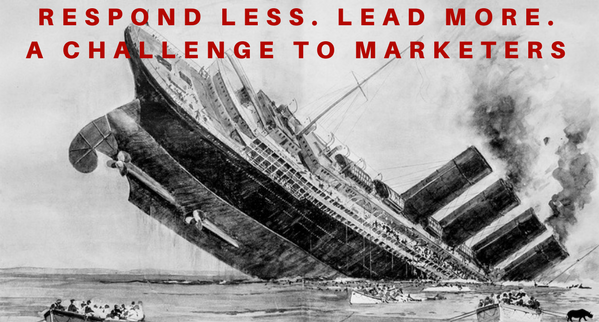Could Moneyball be the Ultimate Metaphor for Retail?
/Last night I was working on a client's website, and had the film 'Money Ball' on in the background. I've seen this movie several times already, but this viewing, framed perhaps by the work I was doing, made me think about all the ways in which Money Ball perfectly describes the world of today's retail. In an era of technology-leading discount giants (who also happen to dominate retail), it makes staying relevant, even if you are a house-hold brand-name company, difficult. So why is retail so hard? My fear is that although we have mountains of data, we aren't leveraging it correctly. Nor are we telling bold enough stories in our marketing and communications. With all this focus on data, have we lost focus on what matters most?
As we’ve observed from the announcements this year alone, Macy’s, J.C. Penney, Sears and Kmart are just a few of the major chains that have announced sweeping store closures. And unfortunately for them, and many others, this trend of closing brick-and-mortar locations isn’t likely to slow anytime soon, as retailers have been forced to reexamine their overhead, competitive advantage and vulnerabilities. Much like in this movie, the different franchises, strained by owner and fan pressures, player budgets, injuries, and the available talent pool force the A’s to reinvent themselves.
Retail business leaders everywhere are leaning more on their internal teams, and agency partners, challenging them to define a strategy for how to diversify and reach larger audiences (that, or how to get more revenue from existing customers). Some brands have determined that the millennial demographic (for instance) is their key to sustainable and healthy continued growth, and so they are pivoting from affiliate or email marketing, and launching more social-first initiatives to meet millennials organically, in places millennials spend their time.
Some brands aren’t departing from their traditional marketing strategies, but have been forced to merchandise differently, (essentially) becoming flash-sale sites, blasting out deep discounts accompanied by free shipping minimums, hoping these offers and promotions will keep their fulfillment teams busy. The problem with this strategy (of course), is that it trains the customer to only purchase when the discount is deep enough, and holding onto margins (for you) will be nearly impossible.
The equalizer here, is that everyone in retail is under the same pressures. Both the biggest behemoths with an army of strategically placed warehouses all over the country - to the leanest startups driving innovation with nothing to lose. I’m jumping ahead here, but first Moneyball quote: “There is an epidemic failure within the game to understand what is really happening. And this leads people who run Major League Baseball teams (insert retail company name) to misjudge their players (customers) and mismanage their teams.” The pressure is constant. And despite the sensational headlines from (what I call) “fluff publications” (and no, I won’t name names), this “retail problem” is NOT new. Retailers have always been in a tight spot. It’s been a slug-fest since the birth of the department store. Retailers are like terriers who get themselves into tight spots, and must create opportunity to live another day. Furthermore, brands have always been competing with a lot of noise in the marketplace, especially within their given category, for both general consumer awareness and sales. And with the proliferation of technology, specifically mobile adoption, retailers are competing in many new places – in many new ways – on platforms that they (often) don’t fully understand before they do so.
Think of the brand scrambling that occurred when Snapchat first rolled-out and everyone realized there was probably an opportunity here to increase their awareness and sales. You can imagine marketing leaders asking their teams, “Do we have a Snapchat strategy yet? Is anyone on our social team able to ‘snap’ for us? Can we afford not to be there? Can we afford to be there? What is our brand story, and is it right for snapchat? How can we track the results from Snap?”
Now before I continue, I realize there is probably a savvy CMO reading this post and saying “Brett, Brett, Brett (shaking their head). Don’t you realize the answer to retails’ problems rest in the DATA! The data is our bible. Our go-to resource which tells us everything we (marketers) need to know and it’s our roadmap for everything we do, and explains why we do it. You poor thing.” And my response would be, yes, you are correct. Data is king. Data tells us a lot about how users are interacting with our brands, using our sites and applications, but even the data has limits (GASP!). Suppose for a moment that we take that previous example of a brand that simply starts to discount, to achieve the required sales. Let’s say that 65% of the eCommerce site traffic in Q1 is coming from these deep-discount promotional activities. What happens to the data? The majority of that data will only reflect the story of users who reacted to this type of opportunity, and not your brand. These may be bargain hunters, but not brand loyalists. So does that mean you should take all that data, and make all your marketing plans based on what that data tells you? Probably not, unless you are able to keep discounting at that level, but this is just one example. Think of all the money you must spend on marketing, to get volumes of traffic to your site, for only a fraction to convert into sales. That sort of sounds a lot like what baseball franchises do.
As someone that lives in the world of analytics, and uses data every day, I don’t want to give the wrong impression. My intention is NOT to dismiss data (on the contrary), but merely to point out that data alone will not necessarily solve the pains that come along with retail. Retail requires diversification in many directions, and this is where the Money Ball metaphor gets called into play. To me, the similarities to retail are uncanny. You can't just do any one thing. There is no silver bullet. Just because you have the best leadership team, doesn’t mean you will succeed. Just because you have the best ESP, doesn’t mean you will dominate. Retail requires some risk, some unknowns, constant tinkering, and that is part of why retail has a powerful pull (despite the grumblings). It’s a category that is alive, breathing, and can’t be nailed-down. There is joy in the game of retail, but it's all about balance and diversification. Data can only get you so far. Vendors can only get you so far. Technology can only get you so far. Products can only get you so far. Sometimes what you need is not a huge budget, but a great story, that is authentic and resonates. As American author William Bruce Cameron said, “Not everything that counts can be counted, and not everything that can be counted, counts.” Which brings me to the quote that inspired this bluster:
Situation: During the 2002 MLB season the Oakland A’s leveraged a new system for recruiting players (sabermetrics), and this technique worked. At this point in the film, the A’s have won 20 consecutive games, and seem unstoppable. Finally, they lost 6-0 to the Minnesota Twins on September 5th, the game is now over, and the Twins are celebrating on the field. Voice-over from faux Joe Morgan:
"What the Minnesota Twins exposed is that the Oakland A's were fundamentally not a sound baseball team. I mean, they had a flawed concept that started with the general manager and the brain trust over there thinking that they could reinvent baseball. You can't approach baseball from a statistical bean-counting point of view. It's won on the field with fundamental play. You have to steal, you have to bunt, you have to sacrifice, you have to get men in scoring position, and then you gotta bring 'em in. And you don't do that with a bunch of statistical gimmicks. Nobody reinvents this game."
Perhaps my biggest takeaway from this film is that we, as marketers, should be inspired to stop asking all the wrong questions, and start asking the right ones. Be bold. Take chances. Think laterally and engage with authentic audiences. Diversify. Don't be scared. Speak up and share ideas, and the best leaders will embrace those ideas, and leverage them to continue moving retail ahead in new and interesting ways.







